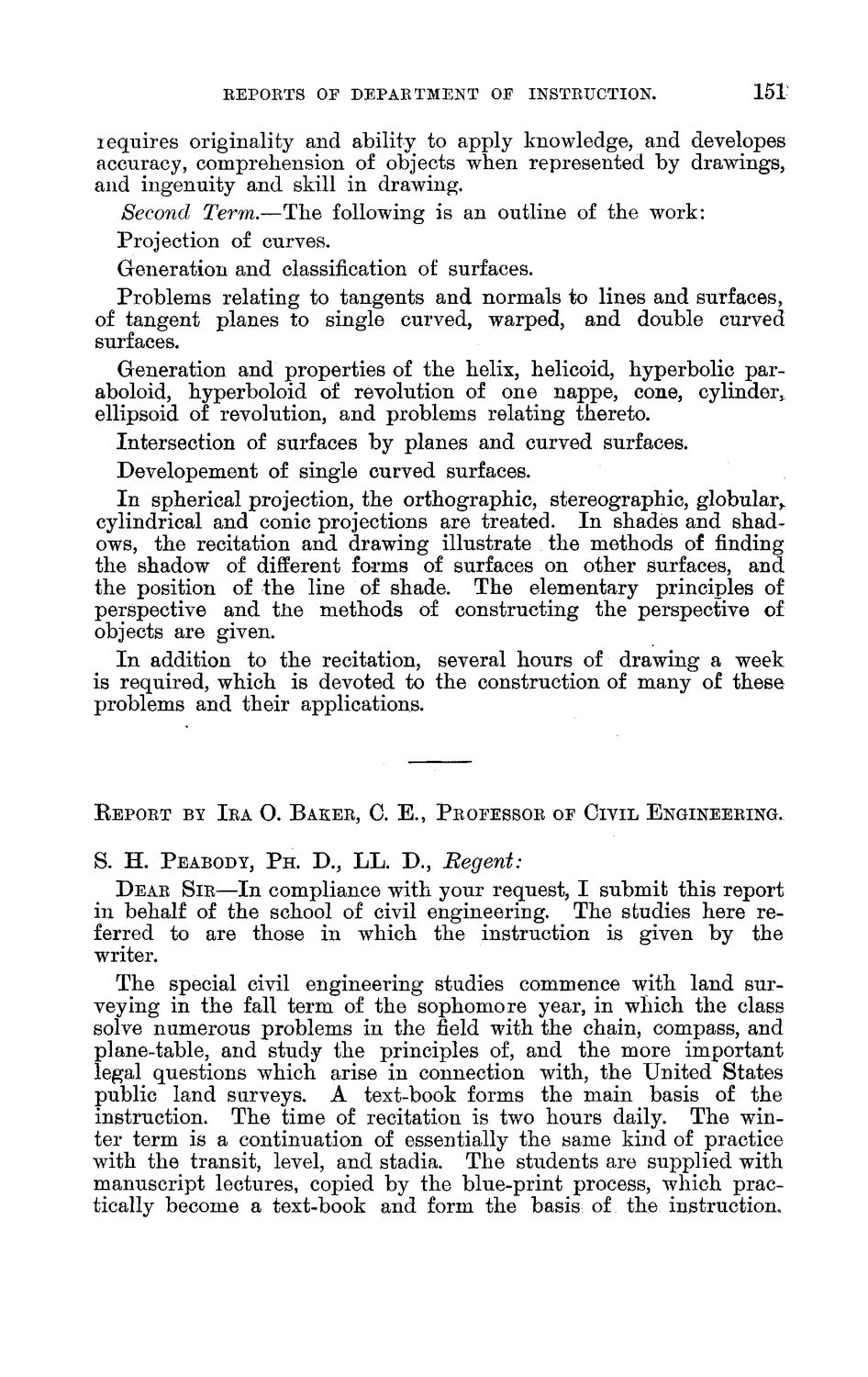| |
| |
Caption: Board of Trustees Minutes - 1888
This is a reduced-resolution page image for fast online browsing.

EXTRACTED TEXT FROM PAGE:
REPORTS OF DEPARTMENT OF INSTRUCTION. 151 lequires originality and ability to apply knowledge, and developes accuracy, comprehension of objects when represented by drawings, and ingenuity and skill in drawing. Second Term,—The following is an outline of the work: Projection of curves. Generation and classification of surfaces. Problems relating to tangents and normals to lines and surfaces, of tangent planes to single curved, warped, and double curved surfaces. Generation and properties of the helix, helicoid, hyperbolic paraboloid, hyperboloid of revolution of one nappe, cone, cylinder* ellipsoid of revolution, and problems relating thereto. Intersection of surfaces by planes and curved surfaces. Developement of single curved surfaces. I n spherical projection, the orthographic, stereographic, globular,, cylindrical and conic projections are treated. I n shades and shadows, the recitation and drawing illustrate the methods of finding the shadow of different forms of surfaces on other surfaces, and the position of the line of shade. The elementary principles of perspective and the methods of constructing the perspective of objects are given. I n addition to the recitation, several hours of drawing a week is required, which is devoted to the construction of many of these problems and their applications. EEPORT BY IRA O. BAKER, C. E., PROFESSOR OF CIVIL ENGINEERING. S. H. PEABODY, P H . D., LL. D., Regent: DEAR S I R — I n compliance with your request, I submit this report in behalf of the school of civil engineering. The studies here referred to are those in which the instruction is given by the writer. The special civil engineering studies commence with land surveying in the fall term of the sophomore year, in which the class solve numerous problems in the field with the chain, compass, and plane-table, and study the principles of, and the more important legal questions which arise in connection with, the United States public land surveys. A text-book forms the main basis of the instruction. The time of recitation is two hours daily. The winter term is a continuation of essentially the same kind of practice with the transit, level, and stadia. The students are supplied with manuscript lectures, copied by the blue-print process, which practically become a text-book and form the basis of the instruction.
| |